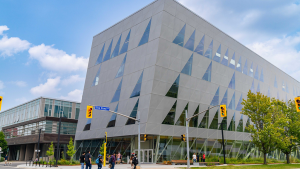This is the second article in a two-part series exploring the measures various provincial governments, industry stakeholders and the like are taking in order for major infrastructure projects to get underway and help the country recover from the COVID-19 crisis. To read part one click here. https://canada.constructconnect.com/joc/news/infrastructure/2020/07/infrastructure-projects-funding-critical-to-reboot-economy-stuck-in-covid-19-recession
In the months since the COVID-19 pandemic descended on Canada in March 2020, there have been many calls for putting government money into public sector infrastructure.
Proponents say such projects will help reboot an economy mired in recession.
Some Canadian economists, however, are ambivalent about the idea.
George Fallis, professor emeritus of economics and social science at York University in Toronto, said “Infrastructure spending is a standard recommendation for fighting unemployment in a recession.”
But this is not a standard recession or type of unemployment, he said.
Although Canada’s Gross Domestic Product has fallen precipitously, we do not face a problem of deficient aggregate demand, in which people are too scared to spend.
Instead, said Fallis, we have a government-mandated three-sector economy – the necessary services sector, the work-from-home-with-a-computer sector, and the shut-down sector.
“The government’s task is to open up different industries at different rates as distancing measures are gradually relaxed,” he said. “The unemployment problem will continue, especially for those who worked in the shut-down sector.
“To reduce unemployment we’ll need industry-by-industry programs to help startups and re-hires. And emergency income support will have to be continued, but recalibrated to reduce work disincentives and encourage retraining.”
Fallis said it’s unlikely there’s a role for a public-sector-led infrastructure program to fight this unusual recession.
“Back in January, the construction/infrastructure sector was booming,” he said. “In fact, it was often constrained only by labour shortages. Much construction and infrastructure activity has continued in the necessary-services sector. As distancing is relaxed, it can start up again relatively easily.”
In any event, said Fallis, even if this sector is stimulated, the workers who used to work in the shut-down sector and who need jobs, such as female retail and service workers, cannot easily move into construction.
“This is not to argue that Canada doesn’t need more capital spending on public transit, hospitals, affordable housing and alternative energy infrastructure,” said Fallis. “We do, but such capital spending is unsuited to fighting today’s unemployment.
“We’re going to have to wait for a stronger economy and then have an honest conversation about how to balance taxes, borrowing and user charges to pay for it.”
Like Fallis, other Canadian economists are of two minds about the effectiveness of infrastructure spending.
Ewald Boschmann, former Manitoba deputy minister of finance, said proponents of infrastructure projects will have to make a strong case that they are the best way to get all the unemployed food processors, chefs, waiters, hotel employees, airport workers and pilots back to work.
“That might be tough,” said Boschmann. “Construction workers these days are highly skilled. They have to know the why’s of what is being done and many are specialized equipment operators.
“If I were them, I would emphasize projects that maintain health, that facilitate increases in productive capacity, and that crank up trade and rehiring people, not something that would take a decade or so to realize the benefits from. I would also emphasize repair and maintenance work.”
Jack Mintz, president’s fellow of the school of public policy at the University of Calgary, said government should invest in simple maintenance projects that don’t take a lot of time to get off the ground.
“It’s hard to get infrastructure projects going,” said Mintz. “It can take a long time to get them moving forward.”
Once economic conditions have improved enough to consider large-scale infrastructure projects, government needs to make regulatory changes so that building permits can get approved and built faster.
“Canada is slow in getting building permits approved,” Mintz said. “We’re one of the worst of the advanced countries. We can get a lot of public and private infrastructure built simply by making changes to permitting regulations.”
Paul Boothe, faculty director at Ivey Academy at the Ivey Business School, University of Western Ontario, said the single best thing government can do to get the economy going again is to make people more confident about going out and congregating.
“Protecting public health is necessary, but if your restaurant server is wearing a mask, gloves and face shield, you’re not going to feel very confident, and we need to make people feel safe and secure about sitting in restaurants and airplane middle seats,” said Boothe. “We need fast and accurate virus testing for workers as they go into their places of employment.”
Our political leaders need to have a good understanding of the nature of the confidence problem, he said, and put in place the right set of public health measures
“Government needs to be careful about resetting the economy and base its decisions on solid evidence,” said Boothe. “This is a new situation for policy-makers and they need to proceed carefully.”










Recent Comments
comments for this post are closed